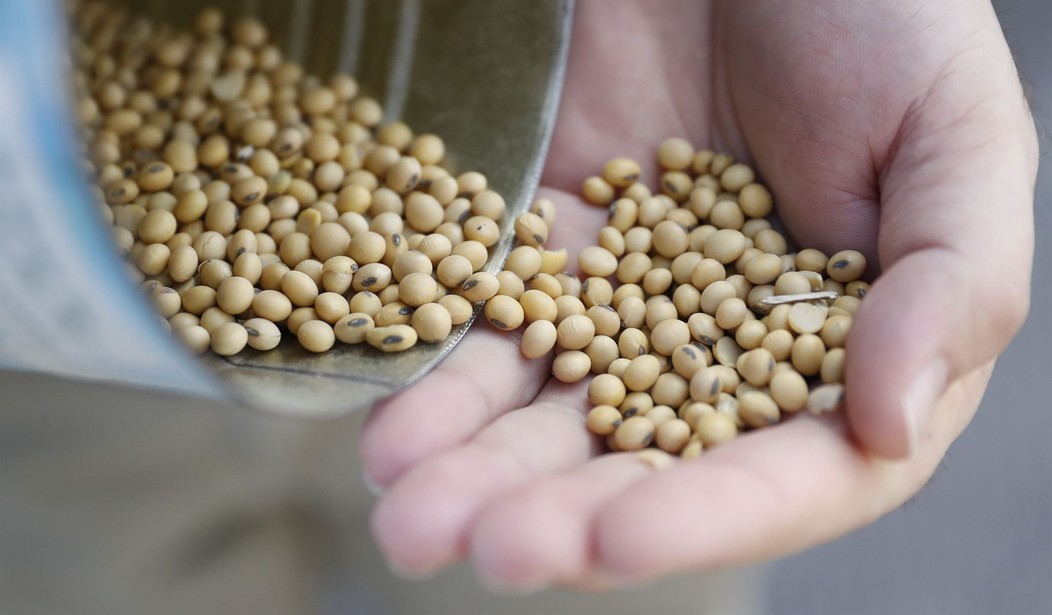Whether nuclear annihilation, Y2K disrupting the world’s computer-controlled devices, climate change ushering in another Ice Age, sea level rise inundating coastal regions to catastrophic levels, or world-wide food shortages from explosive population growth—none of these apocalyptic predictions have ever come to pass.
But why let portending disasters on a global scale go to waste when they sell newspapers and get their authors their fifteen minutes of fame?
Such is the case for the latest impending apocalypse: Our success at engineering specific grains to feed the world’s growing population has been done at the peril of ignoring other varieties to the point of extinction.
My eyes tell me otherwise: Walk down any aisle in a grocery store in the Western world and it is immediately apparent this is not the case. In America we are blessed with supermarket chains as well as gourmet stores like Trader Joe’s, Whole Foods, and Fresh Market. If anything, as careful scrutiny of the ingredient lists on hundreds of different packages will confirm, the number and variety of grains, from “locally grown” to imported from around the world, have increased exponentially during my lifetime.
Darrin Qualman, who served as a researcher and writer for the National Farmers Union, a Canadian organization of farm families, explains how the world’s farmers have successfully increased grain output by “utilizing ever-increasing inputs of water, machinery, fuels, chemicals, technologically-enhanced seeds, and, especially, fertilizers.”
The result is that the world’s farmers “have managed to quadruple global grain production since 1950, and to double production since 1975. This expansion has been accomplished on a largely unchanged land area. Farmers have doubled output since the mid-’70s on a cropland area that, according to the UN’s Food and Agriculture Organization (FAO), has increased by just 5 percent.”
Recommended
So why the disconnect? How is it that a future, worldwide agricultural disaster could result from the development of the best grains—those that produce the highest yields, withstand drought and disease, and efficiently utilize growing space? Or to put it simply: Why is technological advancement a bad thing? Industries such as candle making, ice houses, and the horse and buggy once had important places in society, but technology has allowed us to move on. We have electricity, light bulbs, refrigeration, and automobiles. What were once essentials are now novelties.
Our Western world mentality of entitlement has caused us to focus on the wrong thing—food instead of nutrition. Take for example The Food Network. It’s all about appearance, color, and taste. While we have cooking contests here in America that attract prime-time audiences of millions, there are people in Sub-Saharan Africa that are still struggling to survive.
Grains contain biochemical molecules essential for life: carbohydrates, proteins, lipids, vitamins, enzymes, and minerals. The human digestive system doesn’t discriminate where the grains come from or the nuances of flavor that provide taste notes. After mixing with salivary amylase in the mouth, they are swallowed and pass through a hydrochloric acid solution in the stomach. There they undergo further digestion and finally are absorbed by the small intestine into the bloodstream where cells utilize them for things like protein synthesis and energy production.
My frequent trips to Peru’s farming communities provide further evidence to dispel unfounded fears of a brewing, worldwide grain disaster. It would seem that the Quechua have things well under control.
Rachel Yanac, an American missionary, lives with her two sons and husband, Adelid, in the Andes Mountains in Peru’s Ancash region. She explains that the high altitude of the Peruvian Andes is
"… conducive to the growth of many different species of grains, some native and others that were brought to the Andes by the Spaniards.
"Non-native crops that grow well in the high altitude are corn, wheat, oats, and barley. There are many different types of seeds for barley, oats, and wheat, and the farmers plant them according to what grows best at each altitude. After harvest, these grains are stored in large sacks in the cool, dry adobe houses for use throughout the year, and also for seeds in the following planting season."
According to Adelid, there are hundreds of varieties of corn, as well as other crops that are native to the Andes such as quinoa, kiwicha, and achis or canihua mentioned in Andean Grains and Legumes.
I doubt Peru is the outlier. This approach to agriculture is probably practiced throughout the developing world.
So then what’s the worry? Why the need for a Global Seed Vault, where there is stored a “reserve of seeds for use in case of an apocalyptic event or a global catastrophe?”
Some people might object to all that I’ve said, thinking the problem is not that there are many or few types of grain, it’s that there is a danger of certain ancient varieties from which all other strains derive going extinct. This creates a danger of a monoculture that would be extremely vulnerable to disease.
But scientists, for example at Monsanto, have developed seeds resistant to disease and climatological disasters that produce maximum yields of nutrients not just for profit but to feed the world. As a scientist, my money is on the science, not the fears of The Greens with their "what-if" scenarios of possible grain Armageddon.
If anything, we are in the strongest and safest position in civilization as far as grain production is concerned to feed the greatest number of humans in history.
While I can understand a concern over climate change’s effects on various crops, especially wheat, and the more immediate concerns about Covid19’s crimping of the supply chain and its ability to deliver grain in a timely manner, I cannot accept the overblown fears of a dystopian doomsday scenario based on limited varieties of grain.
This is nothing short of Luddism.
Gregory J. Rummo is a Lecturer of Chemistry at Palm Beach Atlantic University in West Palm Beach, Florida and a contributing writer for The Cornwall Alliance for the Stewardship of Creation.

























Join the conversation as a VIP Member